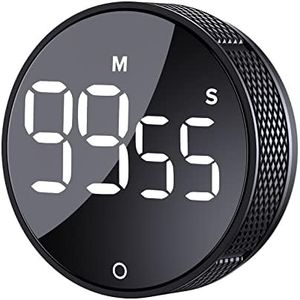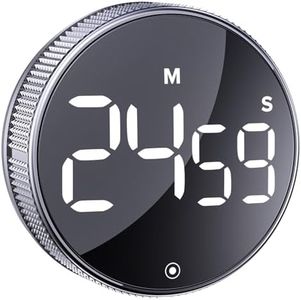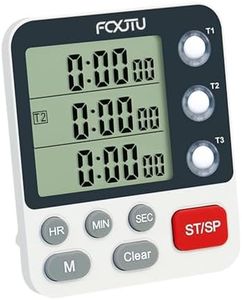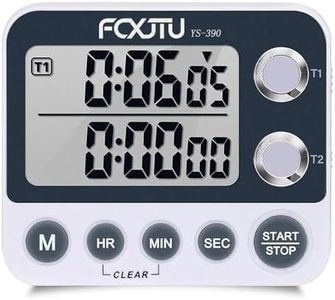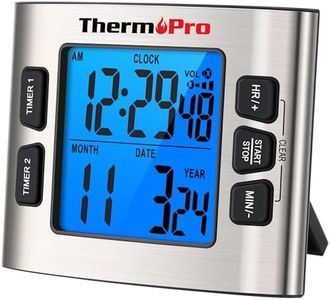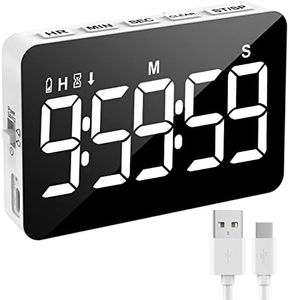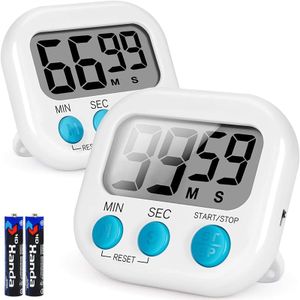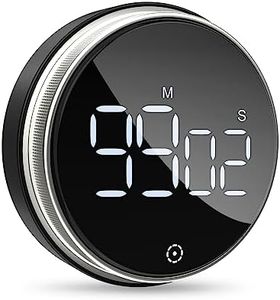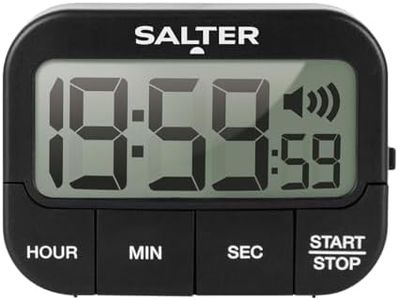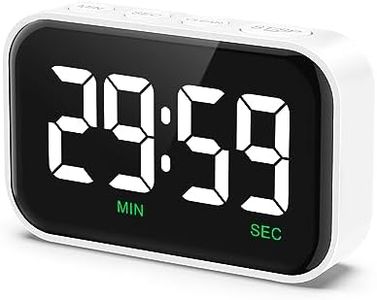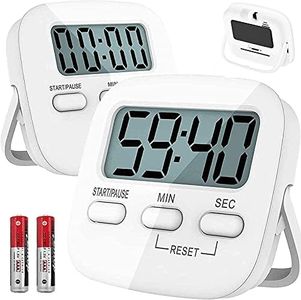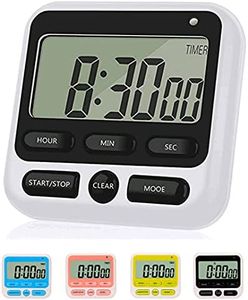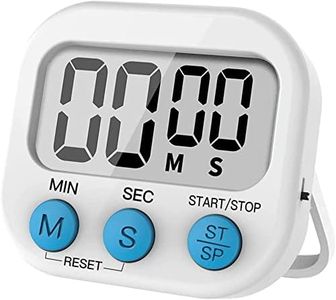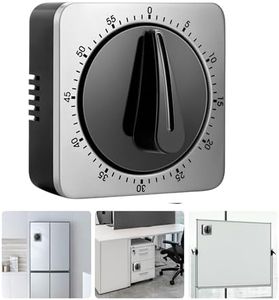We Use CookiesWe use cookies to enhance the security, performance,
functionality and for analytical and promotional activities. By continuing to browse this site you
are agreeing to our privacy policy
10 Best Kitchen Timers
From leading brands and best sellers available on the web.Buying Guide for the Best Kitchen Timers
Choosing the right kitchen timer can greatly improve your cooking and baking experience by helping you keep track of multiple dishes and preventing overcooking or burning. To find the best fit for your needs, it’s important to consider how you typically use your kitchen, whether you need something simple for everyday tasks, or a more advanced timer for complex recipes or multitasking. Take a look at the most important kitchen timer features to help you make an informed decision.Type (Mechanical vs. Digital)The timer type refers to whether the device is mechanical, using a dial and a bell, or digital, using a screen and buttons. Mechanical timers are straightforward and easy to use without batteries, making them great for simple timing needs and those who prefer tactile feedback. Digital timers often have more features, such as multiple programmable times and louder alarms, which can suit more complex cooking. Think about if you need extra functions or just want something basic, and decide accordingly.
Number of TimersSome kitchen timers let you track only one countdown at a time, while others can manage two or more separate timers. If you often prepare several dishes at once, a multi-timer helps you keep everything synchronized. For simple, single-dish cooking, a basic one-timer will do. Assess whether you need to monitor multiple dishes, as this should be the guide for your choice.
Alarm VolumeAlarm volume determines how loud the alert sound is when time is up. Quiet alarms can be missed in busy kitchens, while louder alarms are ideal for noisy environments or larger homes. Some models have adjustable volume. When picking, consider how busy and loud your kitchen space is––if you worry about missing it, louder or adjustable alarms offer peace of mind.
Display Size and VisibilityThis describes how large and clear the timer numbers are on the device. Bigger, brighter displays are easier to read from a distance or for those with poor eyesight. If you want to keep an eye on time while moving around the kitchen, or have vision difficulties, picking a timer with a large and clear display will be more convenient.
Maximum Countdown TimeMaximum countdown time is the longest amount of time the timer can be set for, which can range from 60 minutes to several hours. If you only need to time short tasks like boiling eggs, a short maximum is fine. For slow cooking or baking, a longer maximum countdown is better. Consider the longest tasks you ever time and pick a timer that exceeds that duration.
Ease of UseEase of use refers to how simple and intuitive it is to set, start, and stop the timer. Some timers have one-step operation, while others require navigating menus or multiple buttons. If you prefer simplicity or want something for older adults or children to use, choose a timer with the fewest steps and clear labels. Those who enjoy technology may appreciate advanced, programmable features.
Mounting and PortabilitySome kitchen timers are designed to sit on a counter, while others have magnets, hooks, or stands so you can mount them on a fridge or hang them. If you’re short on counter space or want to place the timer where it's always visible, look for options with flexible mounting. Portability might also be important if you want to use it in different rooms or outdoors.
